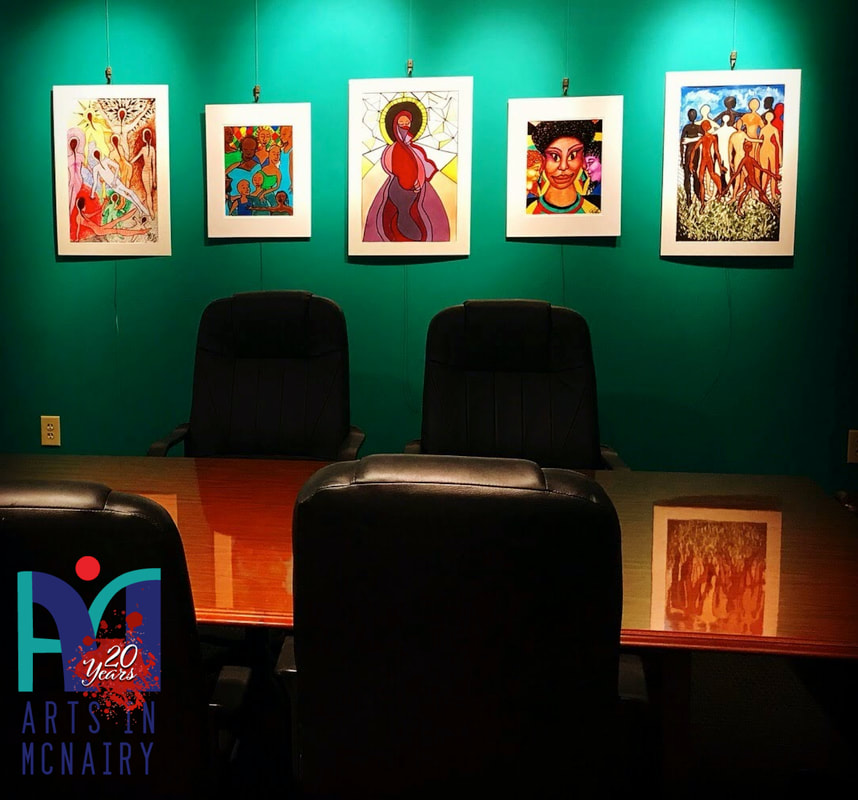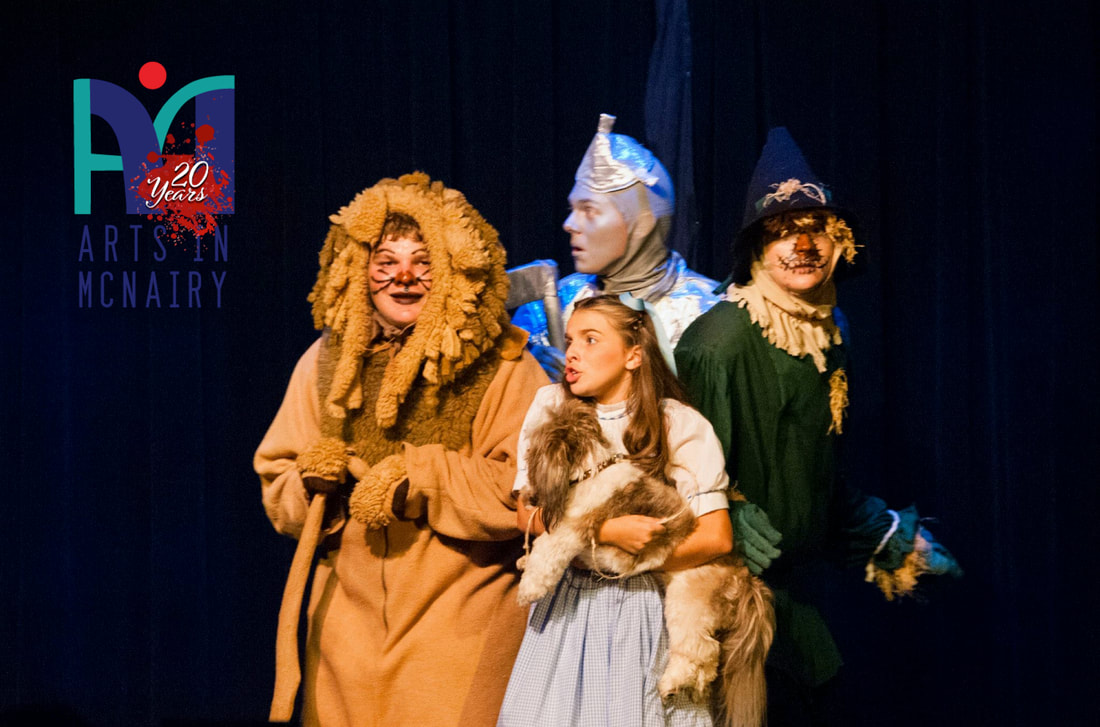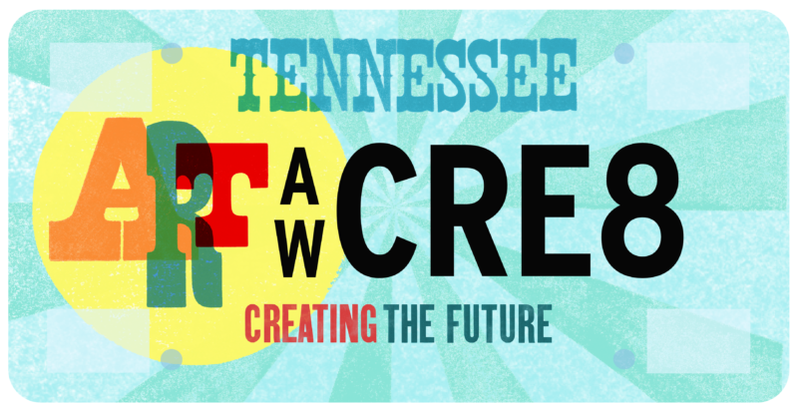|
By Shawn Pitts
The phrase “fine art” is sometimes used to distinguish visual art created purely for expressive or aesthetics purposes from art objects fashioned for utility. In other words, fine art is thought-provoking or pretty to look at, but otherwise not very useful. I’ve never found that distinction particularly helpful, especially when it’s used by snobs to make themselves feel superior or erect artificial barriers that hamper accessibility to the arts. Another unproductive way of categorizing creativity is placing a partition between fine art and folk art as a means of segregating the trained artist from the self-taught artist. Again, not very helpful. Fortunately there’s not a lot of art snobbery around here, and the county arts agency, Arts in McNairy, has worked hard to ensure it stays that way. One of the core values of the organization has always been inclusiveness. The volunteer leadership is oriented to recognize the value of all creativity without regard for artificial boundaries or elitist attitudes about the arts. It is possible—desirable, as we see it—to simultaneously appreciate the merits of a a great painting and an item of traditional handcraft or folk art without drawing meaningless comparisons. This is not to say there are no standards when considering what constitutes quality artwork. Even those who are not artistically inclined will recognize that the requisite skills and imagination required to paint a masterwork or the years of tradition and experience that go into artisan level handcraft are not quite the same as enjoying a paint by number board or craft kit. There’s nothing wrong with painting by numbers or using prepackaged craft projects which can actually help people gain valuable skills in those mediums. We recognize the benefits in such pursuits but place a higher value on the work of those who engage more deeply with the creative side of the process in their chosen artistic discipline. I think of a talented metalsmith and jeweler who got her start dabbling in jewelry making with simple beed kits. Anyone who could read the instructions and possessed reasonable dexterity could have completed the kits, had fun while doing so, and been rewarded with an attractive necklace or bracelet. But those experiences sparked something deeper in this woman and she was able to use them as a springboard to become a successful jewelry artisan. Creative maturity follows many paths. I am grateful for all those who have labored over the years to call attention to the diverse group of visual artists working in our community. From the earliest days of Arts in McNairy’s existence a dedicated visual arts committee has supported a vibrant regional scene of first-rate artists and artisans. Off the top of my head I can think of local exhibits and receptions that have included: painters, potters, glass artists, sculptors, folk artists, photographers, muralists, collagists, textile artists, media artists, illustrators, and others whose works defy tidy categorization. The committee has hosted workshops and learning opportunities for visual artists and made a popular annual student art show—the latest installation is now hanging in the Latta galleries—a staple of the organization’s activity. Embracing the opportunity for creative collaboration with other AiM programs, the committee partnered with the heritage arts chair to give the community stunning works of public art like the two widely acclaimed Rockabilly Highway Murals by Brian Tull, and Lanessa Miller’s “Quite the Thing” that now graces the Latta Theatre, fittingly commemorating that space’s live music heritage. In 2016 the committee curated an exhibit of incredible local artists for the Nashville Arts at the Airport project. That display was seen by thousand of international travelers and it offered, perhaps, the most accurate reflection of our county’s creative diversity and highlighted AiM’s inclusive approach to the visual arts. I remember receiving a text from a friend who was passing through the Nashville Airport one evening. It said something like, “Wow! Who knew McNairy County was so rich in visual artists?” My reply was something like, “We did.” This post originally appeared in the McNairy County Independent Appeal
0 Comments
By Shawn Pitts We were standing in line to buy tickets when the gentleman approached us. It was, perhaps, fitting that it was a football game. Something important was obviously on his mind, and his remarks were directed more at my wife, Joanna, than me. He wanted to tell us how much he appreciated Arts in McNairy’s community theatre program. He said his son, among other kids he knew, had gotten involved with the youth theatre productions and the family had witnessed a rather remarkable change in him. Where before he lacked confidence and direction, he now seemed more self-assured, socially connected and was even doing better in the classroom. The man went on to say he always wanted his son to play football, which he did for a time with some success, but the young man’s heart just wasn’t in it. He had the aptitude, but not the desire. The supportive father admitted he wasn’t much of a theatre person before, but he had attended all the plays in which his son was cast and found the live shows surprisingly entertaining. More importantly he realized his son had found his niche and was learning many of the valuable lessons about teamwork, discipline and leadership he hoped time on the gridiron would instill. In twenty years of involvement with community theatre, we’ve heard countless stories like that: kids who didn’t quite fit in anywhere else finding their voice and their passion on stage; adults who always wanted to give acting a try but never did until there was a nearby outlet; people of all ages who found a welcoming community of theatre enthusiasts who valued their contributions and their friendship. The father’s experience as an audience member also echoes much of what we’ve heard from local theatre goers: many of them didn’t know how fun and entertaining live theatre could be until it was regularly accessible in their community. Add to that, the thousands of students who had their first exposure to live theatre at one of the daytime shows staged exclusively for local school children at the Latta and I think you will see where I am going with this article. There is a tendency in community development circles to see local theatre programs as extraneous to the “real work” of community building; it’s better to have one than not, but it’s really not essential. I remember hearing an economic development professional attempt to praise a theatre company in his region by saying, “Hey, not everybody can play sports, so we appreciate the theatre program offering kids an alternative.” He meant well, and it’s always good when someone recognizes inherent value in the arts, but that statement betrays a pitiful lack of understanding. He made it sound like people only do theatre because they can’t do sports; they would really prefer to be a pitcher or a quarterback, but they settle for a role in a play because they didn’t make the team. I used the example of the young man and appreciative father Joanna and I encountered to illustrate a point. The son was athletically gifted and had experienced success in organized team sports, but found more meaning and fulfillment in the arts. Theatre was not his second choice, it was the place he experienced affirmation through interaction with other creative people who helped his family recognize the transformative power of community building through the arts. If it’s a healthy, well rounded community we are after, that sounds pretty essential to me. Arts in McNairy’s community theatre program has offered this region high quality, local entertainment for two decades now. Along the way adults, teens and children have acquired valuable skills in acting, directing, costuming, set design, technical production and theatre management. They have experienced the challenges of late nights and long weekends in the theatre working in concert with dozens of volunteers to bring a finely tuned production to stage and the joys of thunderous applause at the closing curtain. Audiences have enjoyed lavish Broadway musicals and austere, minimalist theatre; intense drama and side splitting comedy; original play debuts and stage adaptations from the canon of western literature; adult dinner theatre and one act plays produced, acted and directed by local youth; and the list goes on and on. If there is one thing we’ve learned over the years, it’s that a robust community theatre program is more than a few people getting together to occasionally memorize and recite some lines. It’s an economic engine that pulls thousands of dollars into our local economy each year. It’s a springboard for building confidence, acquiring life skills, and enhancing academic performance for our kids. It’s a framework for exploring and understanding the wider world while bringing inspiring stories to life with and for your neighbors. It is life-changing for many individuals and, don’t let anyone kid you, it is community building of the highest order. So, as we emerge from the shadow of a pandemic, when it’s safe to gather in large groups again, do yourself a favor and come to an audition, buy a season ticket, or just attend a show or two. You’ll be glad you did and it will be encouraging for those who work so hard to provide live, local arts and entertainment options. They do it for you, you know? It’s called community theatre for a reason. This post originally appeared in the McNairy County Independent Appeal |
|
|
Photo credits: Huffoto (Arts in McNairy's official photographer)
|
Arts in McNairy | 205 W Court Ave, Selmer, TN | PO Box 66, Selmer, TN 38375 | 731-435-3288| [email protected]



 RSS Feed
RSS Feed
